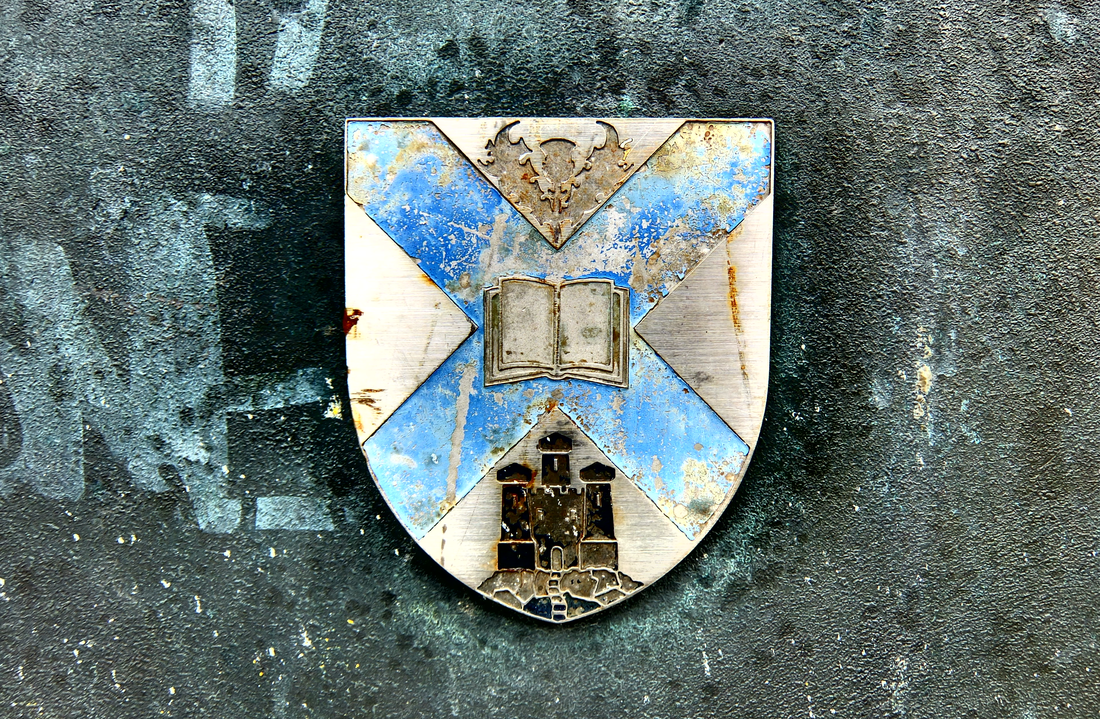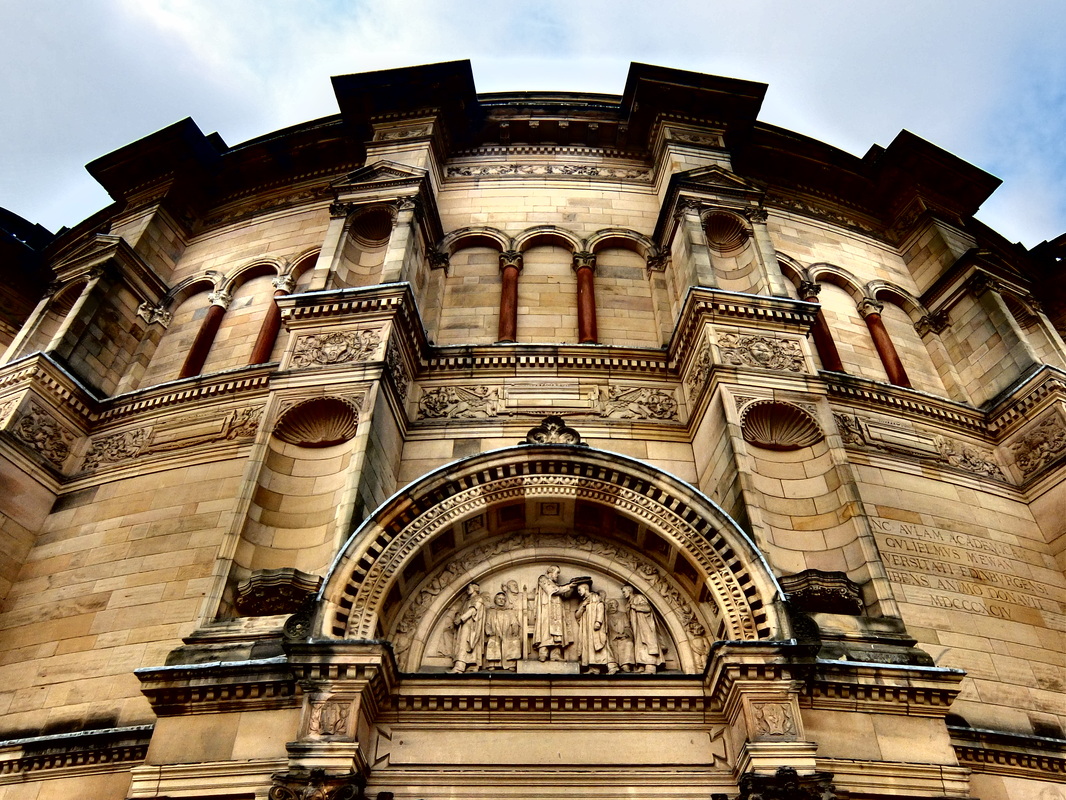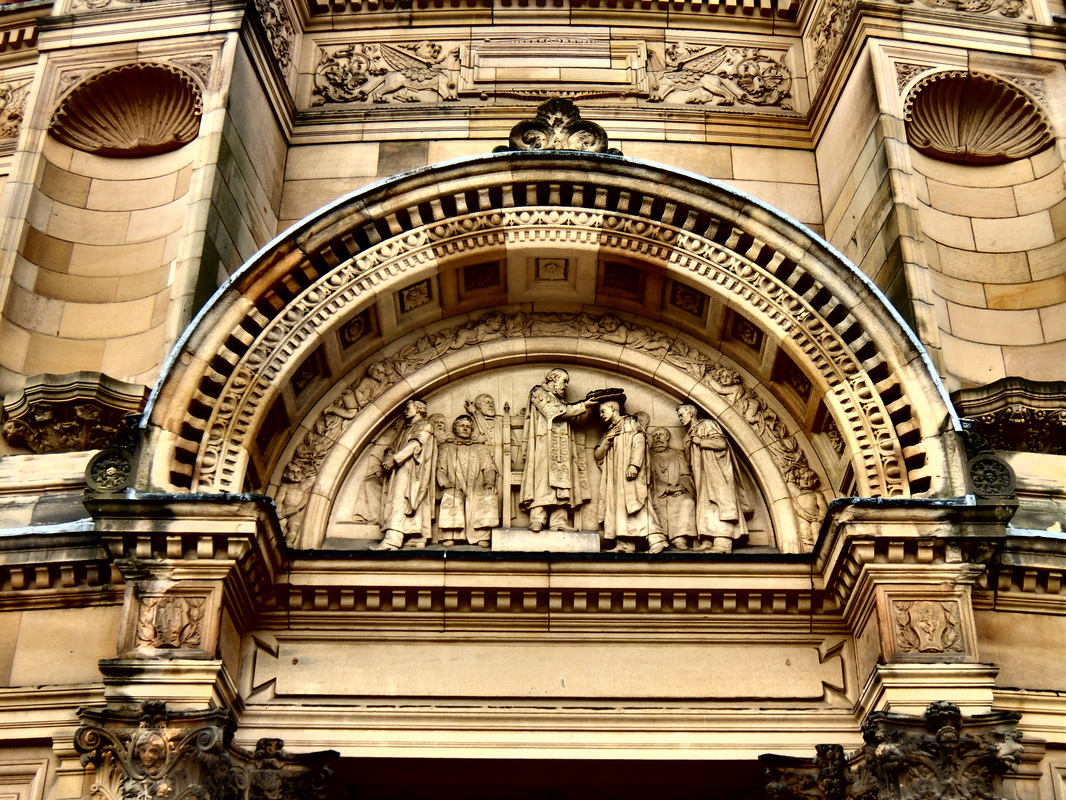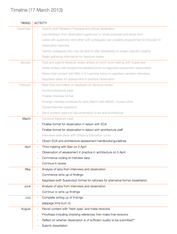|
Within the lit review, rather than talking at great length about the fact that multimodality already exists within the academy - I'll put the message across in a multimodal way.
Within the lit review i will use the phrase 'a wander around the campus...' and will hyperlink to the video. The video - which I've already explore in this blog - will take a multimodal approach to explain what would otherwise seem quite forced and incomplete in words. The video could include a combination of sound, photography and perhaps a few short captions. I would include music, art and a PowerPoint presentation. It would be good to extend this to another subject area within Edinburgh University but time is really tight.
0 Comments
Somewhere in the dissertation I should draw attention to all of the digital tools I've used during the dissertation. Actually, this is a section that should sit within the Acknowledgements and Bibliography section.
When I talk about the different tools that are available to students - or perhaps more specifically when I talk about my plans to create original work in the rationale - I would then hyperlink to the different tools I have used myself during the dissertation. During the dissemination rationale I will discuss the idea of originality and discuss whether we should be acknowledging the digital tools and spaces that can significantly influence how we represent our ideas. Just a quick thought on what this might include (and perhaps I would group them by their function or by how I've used them): Photoshop, PowerPoint, Word, Weebly, Sound Studio, Thing link, Bloom. Actually, I should stick to the compositional and representational tools and spaces, not stuff like Dropbox. It makes sense that I should use a Brian Eno app to create the sound in my dissertation website. I've listened to his ambient albums as much as anything whilst I've been working on my dissertation.
Also, the apps created by Eno and Bloom are in themselves multimodal, with their combination of sound and visuals. So I'll use a multimodal app to create the soundtrack for my multimodal dissertation. Maybe it's worth acknowledging this somewhere in the dissertation - probably the combined acknowledgements and bibliography section (which perhaps lends itself to a more interesting title than Acknowledgements and Bibliography). [Since initially writing the notes below I have abandoned the idea of soundtracking particular sections of the website and will instead include soundtracks only for the video components. Nevertheless, in case I have an unlikely change of plan, and also for completeness, I've included my initial thinking on this blog, below]
I don't have the time or ability (I don't think) to create an original piece of music for every section of the dissertation. Here then are the different options: 1. Only create music to accompany the major, lengthy sections. This would be the literature review and the discussion of data. The problem here would be that the other sections might feel a bit incomplete without music. And how wold I justify only having music and sound for some but not other sections? I don't think a lack of time is an acceptable critical justification. 2. I create a long loop of music for all sections In this case, rather than creating a piece of music to match a particular section of the dissertation - and I have no idea how I would create representative music for an appendix, for instance - I would instead create a single piece. Furthermore, it wouldn't be possible to create music that perfectly coincides with particular section of text. So I would Create a single long track that it representative of the wider project rather than a single, specific section of the text. And the winner is.....Option 2. Well done Option 2! So what would this involve and how would it work? This piece would be on a long loop, evolving as it plays so that no two parts of the are identical. Thank you, Brian Eno and Jem Finer. Using one or more sound creation apps, I would create a long loop of music. This might involve creating a series of separate pieces that are then merged together. To that I could add other fragments of sound that I record separately. To give the impression that these are all different pieces of music, there could be a different start place on each page of the site. [Pity I've this idea this idea to the vaults - it was quite a nice solution, I think.] This short section of text will be on a discreet page, linked to from the front page of the website. Perhaps I will link to this using an information icon.
After that I'll briefly explain or discuss the following:
In each case I will use a small icon - for instance a part of a screen shot or an icon - alongside each of the different components above. This will break up the text and make the whole thing more user friendly - a combination of explanation and how to use this site, type of approach.
So, the structure of this section would be:
An idea: I will take the concluding themes from the analysis of data and put them into some form of visually rich, multimodal summary.
This would be a video embedded within the text of the conclusion. I would succinctly take the main themes and present them as punchy single sentence points. Perhaps they would be interspersed with direct quotes from the literature and the data. Actually I like that. Format obviously this will need to be multimodal. By preparing this list I'll be offering another demonstration of the ways in which digital multimodal work can be original, different. This might lend itself to another video, taking a similar approach to that in the Manifesto for online learning. This wouldn't just reproduce the conclusion - it would present the key themes in a concise, multimodal way. Each statement/theme could be represented by a particular typeface, colour, image, sound, as well as the quote from the literature and from the data. Following on from my recent meeting with Sian, I need to give more thought to how I use hyperlinks. I might use them in the following ways:
I think this makes for an appropriate and, with linking to my own blog and to the essays, interesting use of Hyperlinks. Why should my discussion of the data be purely text-based (as I've had in my head). It should be multimodal. And this goes beyond a the use of enlarged type and so on as purely aesthetic visual effects. It should by critical. Here's an idea, then:
While this has been a useful bit of quick thinking-and-jotting-down, I suspect that I should probably focus on the data and see what types of visual approaches lend themselves to emerging themes, rather than thinking of visual approaches and then trying to find data to match.
Following on from my previous post (about McEwan Hall entrance) here's a picture I took of an (old) University crest attached to a wall on Bristo Square. I'm not sure where this will come into my dissertation (if at all) however I'm adding it here as a reminder, and also because I like the photo. Actually, the ideal place for this would be within the Literature review when I'm talking about Ray Land's reflections on university crests. Perhaps I include the static image alongside the text. Or perhaps I develop it in some animated way. Or both.
Yesterday morning I wandered over to McEwan Hall where the University graduations were taking place. I took some photos partly to test my camera, but also as a reminder of what I'm missing out on through my lack of recent activity on the dissertation. This was self-punishment for my slow progress. I wonder however whether an image similar to those above might be useful in a different way? My current thinking for the 'cover photo' for my dissemination website is that the content of the computer screen in the centre of the picture will represent the opening to my work. Clicking on the screen will open the Introduction/Abstract/Background section. Although I had given much though to the final detail of what would be 'showing' on the computer screen, however I loosely imagined that it would clearly signifiy the content that would follow, for instance it could be the abstract or similar on screen text.
An alternative approach is that I could use a photograph of a university entrance way as the entrance to my work. The door/entrance visual metaphor is far from original on websites, however I could offer added meaning by having the image content as specific to my own work: Edinburgh University's entrance as the opening to my ideas about multimodal assessment in the same institution. Further, the image on screen could be in the process of edited so that it goes beyond a static image to a photograph that is alive and an active part of the depicted scene. Could I make the image itself multimodal - perhaps the editing involves adding some text over the image within Photoshop? Maybe this is a bit cliched. It's more interesting than simply text on screen. Yes, what is on screen should be multimodal - to do otherwise would partly contradict my work and the rest of the image of which the computer screen is a part. I'll revisit this at a later date and see if it still stands up. |
Categories
All
Archives
October 2013
TimelineOther stuff
|



